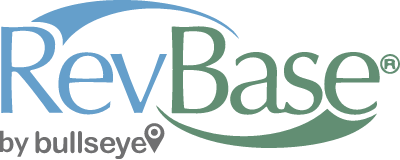
A marketing asset management system is a destination – a piece of marketing infrastructure where marketers, sales reps, partners, vendors, and others go to access the latest and greatest materials they need to do their jobs. But for many users, the idea of having to login to another website can be frustrating.
Getting an email beats logging in.
These users generally want the system to be proactive and notify them of interesting information, events, materials, and other relevant content. The administrator (the person responsible for the smooth operation of the system) may also prefer to be notified rather than login to a dashboard for updates on day-in, day-out operations of the marketing asset management system.
Content managers may be infrequent contributors to the marketing asset management system and not in the habit of regularly checking to see what’s new. In many cases, they too prefer to be notified. So while multiple audiences know they can access the system on a 24/7 basis from any device and interact with content, some users prefer for the system to reach out to them with notifications, usually via email.
Granted, marketing and sales professionals receive a lot of email already. On the other hand, when email provides information one needs to do a job and save time, it’s viewed as a welcome productivity improvement tool. So let’s explore the kinds of notifications a typical marketing asset management system provides. We’ll discuss a common set of notifications, but please keep in mind this is by no means an exhaustive collection.
Common notifications for new or updated marketing materials.
The first is user notifications on new or updated materials. Ideally, each user is able to subscribe to or express interest in particular kinds of marketing assets. These could be by product, type, region, language, or whatever. Each user is able to specify interest in the kind of information he or she wants. The system then communicates with each user via email when information is available.
Lots of options and configurations exist around this, but a simple case is a nightly email on new and updated content for a particular product line a sales rep sells. Or new content for a particular kind of marketing asset someone’s interested in. Maybe they’re currently big on trade show materials because it’s trade show season and they want to know if anything new is available from the trade show group.
In some cases, users are targeting a new industry and want to know whenever relevant new content for that industry is added to the system. This could be a regular notification the user might choose to receive weekly, daily, or even immediately after it’s uploaded. Why? Well, let’s say it’s information pertaining to the financial services industry relating to markets, trends, or pricing that needs to instantly be made available to users because it changes so often and must be reviewed quickly.
One example of this is the mortgage business, where rates constantly change. The marketing asset management system can notify brokers whenever there’s a new or updated rate sheet. An email goes out, typically with a link to a related document in the system. The recipient clicks the link to access and download the document. Obviously, the email itself can include easy-to-use information, so recipients are able to quickly understand if it’s something they want to look at immediately or later.
The goal here is to push relevant information as quickly as possible in a format desired by users and administrators – without the need to login. People who need to manage the marketing asset management system benefit from a wide range of notifications about activities happening within the system.
Orders that are placed, content that is uploaded, new accounts being created, accounts that are disabled, assets that expired, materials going live – all of these day-to-functions and many others are often detailed in email notifications to administrators, depending on organizational and individual needs and preferences.
Here again, the system is responsible for sending out each notification properly messaged and addressed, with relevant pieces of information the administrator needs. Content managers might want to receive notices of items being expired or items going live. If a particular content manager is responsible for, say, a product line or a particular kind of material, it may be useful for them to receive a daily or weekly listing of their material – including which ones are active or inactive, which ones were recently added, etc. All of these notifications can be provided by the system in an automated way.
High-value notifications.
In special cases, the marketing asset management system provides high value-added notifications. Not just typical notifications but ones that are really tied into business processes. For example, regulatory compliance. In certain industries, when marketing assets expire, it’s essential to ensure they’re no longer used. There are legal rules and implications regarding dates and markets in which a particular asset can be distributed and used. When that asset expires, it’s critical that all potential users are notified.
But many companies these days not only want to notify users; they actually want the system to record that each user has received the notification, has acknowledged the notification, and taken action to discard any digital or physical copies they might have. In this case, the system not only notifies users but also collects input from each one, so management is assured the material has been eliminated across distribution channels.
Another example of a high value-added notification is approvals and workflows. In the marketing asset management system, orders are often placed for physical or print items and flow through to a fulfillment facility or commercial printer. But in some situations, orders need to be reviewed and approved. One of many reasons: a distributor has a budget for materials and any spending beyond the budgeted total needs to be approved by a manager.
In these cases, the marketing asset management system records the order. It can also send a notification to an appropriate person letting them know via email that an order has been received. In the email, the manager can receive complete information needed to review and either approve or reject the request. Upon approval or rejection, the order either continues on to the printer or the user receives communication via email with the reason for the rejection.
Notifications of imports and exports.
A final category of general notifications from a marketing asset management system is notifications regarding automated imports and exports from the system. Earlier, we discussed how a marketing asset management system, in many cases, has automated inputs of new materials coming from other systems. Or, the system exports content to other systems. When these imports and exports are automated, it’s common to have notifications built into these jobs to let the administrator, or others responsible, know the number of assets that were added, updated, extracted, and so on. At the very least, it provides assurance that the job is running on schedule and no human intervention is required.
Given all the possibilities of automated notifications from a marketing asset management system, which ones are most important for your team?
To download our complimentary white paper, “10 Signs You Need Marketing Asset Management,” click here.
